A total of 22 professors were named as authors of the Outstanding Research Papers for Week 4 of October 2025, as selected by the Industry-Academic Cooperation Foundation. The selected professors are: Ko Joon-ho (Graduate School of Urban Studies, Department of Urban and Regional Development), Kwon Eil-hann (Department of Earth Resources and Environmental Engineering), Kim Ki-hyun (Department of Civil and Environmental Engineering), Kim Dong-won (Department of Chemical Engineering), Kim Dong-jin (Major in Data Science), Kim Jin-soo (Department of Earth Resources and Environmental Engineering), Kim Jin-woo (Department of Civil and Environmental Engineering), Kim Hak-sung (School of Mechanical Engineering), Kim Hyung-shik (Graduate School of Biomedical Science and Engineering, Department of Biomedical Science), Kim Hyung-jun (Department of Chemistry), Noh Jae-geun (Department of Chemistry), Sun Yang-kook (Department of Energy Engineering), Song Ho-cheol (Department of Earth Resources and Environmental Engineering), Yook Se-jin (School of Mechanical Engineering), Lee Yun-soo (Department of Educational Technology), Lim Young-hyo (College of Medicine, Department of Internal Medicine), Jung Yei-hwan (Major in Biomedical Engineering), Joung June-gak (School of Interdisciplinary Industrial Studies), Choi Kyung-ah (Department of Interior Architecture Design), Hyun Kyung-hoon (Department of Interior Architecture Design), Hong Je-hyeong (School of Electronic Engineering and Major in Biomedical Engineering), and Hwang Jang-yeon (Department of Energy Engineering). (Listed in Korean alphabetical order)
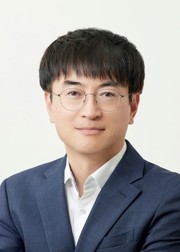
Professor Ko Joon-ho | Graduate School of Urban Studies, Department of Urban and Regional Development - Gender differences in the acceptance of autonomous vehicles: application of the extended technology acceptance model
Professor Ko Joonho's paper was published in the SSCI-indexed international journal, International Journal of Urban Sciences (2024 IF 3.0). The research team surveyed 1,000 potential autonomous vehicle users residing in Seoul to analyze gender-specific acceptance factors. The findings indicated that males prioritized usefulness, subsidies, and image, while females placed higher importance on ease of use, trust, and economic viability. This study empirically confirmed that gender differences exist in the perception of autonomous vehicles.

Professor Kwon Eil-hann | Department of Earth Resources and Environmental Engineering - Carbon-negative syngas production via CO2-assisted catalytic pyrolysis of lignocellulosic yard waste: A case study on horse chestnut shells / Net carbon reduction from the pyrolysis of corn stover
Professor Kwon Eil-hann published his papers in the SCI-E-indexed international journal, Journal of Environmental Management (2024 IF 8.4). The first paper involved the research team performing a catalytic pyrolysis reaction on horse chestnut shells under a CO2 atmosphere to analyze the potential for syngas production. They confirmed a tendency for CO2 to act as a reaction regulator, converting volatile components into carbon monoxide, and that the syngas yield increased when a nickel catalyst was applied compared to conventional methods. This study is significant for experimentally demonstrating the applicability of the CO2-utilizing catalytic pyrolysis process.
Another paper featured reports quantitative analysis of carbon flow generated by the pyrolysis of corn stover. They confirmed a tendency for carbon reduction effects when CO2 was utilized in the reaction. The study therefore experimentally showed that carbon conversion efficiency varies depending on the catalyst type and process conditions.

Professor Kim Ki-hyun | Department of Civil and Environmental Engineering - Integration of covalent organic framework-based materials and sorptive extraction techniques for quantitation of pharmaceuticals, hormones, and personal care products and 2 more papers(listed below in alphabetical order.)
Three of Professor Kim Ki-hyun's papers were selected as Outstanding Papers for Week 4 of October. The first paper was a review published in the SCI-E-indexed international journal, Trac-Trends in Analytical Chemistry (2024 IF 12.0). Professor Kim summarized the analytical applicability of Covalent Organic Frameworks(COFs) combined with solid-phase extraction techniques for analyzing persistent organic pollutants, pharmaceuticals, and hormones. The work covered the advantages and limitations of the related technology, focusing on COFs' adsorption characteristics, sensitivity, and potential for enhancing analytical efficiency.
The second paper, The smoking of heat-not-burn(HNB) cigarette products and its effects on indoor air quality, was published in the SCI-E-indexed international journal, Journal of Hazardous Materials (2024 IF 11.3). This study measured Total Volatile Organic Compounds(TVOCs) emitted during the smoking of Heat-Not-Burn(HNB) e-cigarettes under various conditions, comparing the emission characteristics with traditional cigarettes. The experiment confirmed that TVOC concentration and the distribution of specific compounds varied depending on the product type and smoking conditions.
The third paper, Solvent-engineered copper cobaltite spinel thermocatalysts for the oxidative removal of gaseous formaldehyde, was published in the SCI-E-indexed international journal, Separation and Purification Technology (2024 IF 9.0). The research team compared the formaldehyde oxidation performance of Copper Cobaltite(CuCo2O4) catalysts synthesized using four different solvents. They experimentally confirmed that the difference in the synthesis solvent affects the catalytic activity and the conversion temperature(T90).

Professor Kim Dongwon | Department of Chemical Engineering - In Situ Formation of 3D Cross-Linked Binders in Silicon-Graphite Composite Anodes for All-Solid-State Lithium Batteries
Professor Kim Dong-won's paper was published in the SCI-E-indexed international journal, ACS Applied Materials & Interfaces (2024 IF 8.2). To address the interface degradation caused by the volume expansion of silicon anodes in all-solid-state lithium batteries, the research team introduced a 3D cross-linked polymer binder structure that forms in situ during the charging process. This binder demonstrated improved interface stability and mechanical strength, contributing to high capacity retention and long-term cycling performance. The study experimentally showed that controlling the binder structure within the composite anode is effective for enhancing all-solid-state battery performance.

Professor Kim Dong-jin | Major in Data Science - FlawMatch: Conditional defect image generation via flow matching for improved surface defect classification
Professor Kim Dong-jin's paper was published in the SCI-E-indexed international journal, Advanced Engineering Informatics (2024 IF 9.9). To solve the problem of defect data imbalance, the research team proposed 'FlawMatch,’ a conditional generative model that creates defect images by reflecting the spatial and geometric information of actual defects using flow matching. The generated images were combined with the original data for training a classification model, and this approach showed improved classification accuracy and sampling speed compared to existing diffusion-based models.

Professor Kim Jin-soo | Department of Earth Resources and Environmental Engineering - Valorizing spent lithium iron phosphate battery in biomass pyrolysis for production of valuable chemicals and mitigating pollutant emissions
Professor Kim Jin-soo's paper was published in the SCI-E-indexed international journal, Bioresource Technology (2024 IF 9.0). The research team applied spent Lithium Iron Phosphate(LFP) batteries as a catalyst during the pyrolysis of walnut shell biomass. They confirmed a tendency for increased production of valuable chemicals, such as hydrogen and furfural. Furthermore, analysis showed that the LFP promotes the dehydration reaction during pyrolysis and simultaneously acts to reduce CO2 emissions and harmful gas generation. The study confirmed that spent LFP batteries can function as a pyrolysis catalyst, contributing to both the production of high-value chemicals and emission reduction.

Professor Kim Jin-woo | Department of Civil and Environmental Engineering - A Spatial Contexts-Informed Self-Supervised Learning Approach for Pavement Distress Segmentation
Professor Kim Jin-woo's paper was published in the SCI-E-indexed international journal, IEEE Transactions on Intelligent Transportation Systems (2024 IF 8.4). To address the issue of manually labeling large-scale road pavement distress data, the research team proposed a self-supervised learning (SSL)-based distress segmentation framework. The model is designed to automatically generate pseudo-labels by utilizing continuous semantic information within road images, which are then used to learn the damaged regions. The experiment showed higher segmentation accuracy compared to existing SSL methods and confirmed the scalability for application in large-scale road maintenance systems.
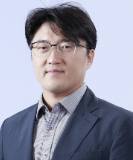
Professor Kim Hak-sung | School of Mechanical Engineering - Effect of electroplating current density and post-annealing on the warpage and reliability of redistribution layer for advanced semiconductor package / Integrated design and validation of 3D radiant heater for electric vehicles: Thermo-Electrical finite element analysis considering strain-dependent resistance in thermo-forming
Both of Professor Kim Hak-sung's papers were published in the SCI-E-indexed international journal, Materials & Design (2024 IF 7.9). The first study analyzed the effect of plating current density and post-annealing conditions on residual stress, warpage, and thermal fatigue life during the fabrication of the Redistribution Layer(RDL) in semiconductor packages. The experiment confirmed that applying optimal current conditions and a post-annealing process reduced the tensile stress of the copper plating layer and improved the mechanical stability of the RDL structure.
His second study focused on the design of a 3D radiant heater for electric vehicles. The team established a simulation model for a Carbon Nanotube(CNT)-based heating structure using coupled thermo-electrical finite element analysis, reflecting the characteristic of strain-dependent electrical resistance during thermo-forming. Analysis showed that the temperature prediction error increased when the strain-resistance correlation was ignored, thus validating the model's applicability for high-efficiency heater design.

Professor Kim Hyung-shik | Graduate School of Biomedical Science and Engineering, Department of Biomedical Science - A Myeloid Cell-Targeted Immunostimulant Cocktail (MyTai) Enhances Cancer Immunotherapy
Professor Kim Hyung-shik's paper was published in the SCI-E-indexed international journal, ACS Nano (2024 IF 16.1). To compensate for the size, stability, and toxicity issues of existing TLR3 agonist-based vaccines, the research team engineered 'MyTai', a myeloid cell-targeted nanoparticle platform. MyTai, which combines a TLR3 agonist(Nexavant) and an NF-κB stimulating small molecule, showed enhanced Antigen-Presenting Cell(APC) activation and tumor eradication efficacy compared to conventional delivery systems. Animal model experiments demonstrated high therapeutic efficacy across multiple tumor types while maintaining relatively low systemic toxicity. This research is significant for proposing a vaccine platform that amplifies the immune response within the tumor microenvironment.

Professor Kim Hyung-jun | Department of Chemistry - Gradient hydrogen bonding and π–π interactions: A dual-mechanism binder for resilient and high-performance silicon-based anodes
Professor Kim Hyung-jun's paper was published in the SCI-E-indexed international journal, Chemical Engineering Journal (2024 IF 13.2). To address the volume expansion problem of silicon anodes, the research team developed a novel binder by introducing Polydopamine-Glutathione(PDG) into carboxymethyl cellulose(CMC). The PDG plays a role in suppressing particle aggregation and enhancing the mechanical stability of the electrode through multiple hydrogen bonding and π–π interactions. The electrode with this binder retained 72.6% of its capacity after 100 charge/discharge cycles, and the full cell showed over 68.5% performance retention after 300 cycles. This study is significant for presenting a binder design strategy for the commercialization of high-energy silicon anodes.

Professor Noh Jae-geun | Department of Chemistry - Correlation between the Electrical Properties and Formation Temperature of Self-assembled Monolayer-Based Molecular Junctions
Professor Noh Jae-geun's paper was published in the SCI-E-indexed international journal, ACS Nano (2024 IF 16.1). The research team analyzed how the electrical properties of Self-Assembled Monolayers(SAMs) change according to their formation temperature. The experiment confirmed a tendency for defects to decrease and conductivity to increase with higher formation temperatures. They also suggested that the rectification properties are related to the defect distribution within the SAM and the molecular orbital structure. This study empirically demonstrates the importance of conditions in formation process for controlling the performance of SAM-based molecular devices.

Professor Sun Yang-kook | Department of Energy Engineering - Artificial Presetting Layers for Practical Li-Metal Batteries and 2 more papers(listed below in alphabetical order.)
Three of Professor Sun Yang-kook's papers were selected as Outstanding Papers for Week 4 of October. The first paper was a review published in the SCI-E-indexed international journal, ACS Energy Letters (2024 IF 18.9). The research team summarized the function of pre-formed‘Artificial Presetting Layers(APLs)’ on the electrode surface to solve the chronic problems of dendrite growth and interface corrosion in lithium metal batteries. They analyzed that APLs enhance the battery's lifespan and stability by regulating the structure and reactivity of the Solid Electrolyte Interphase(SEI).
His second paper, Customized Solvation Structure for Stable and Safe Sodium-Metal Batteries, was published in the SCI-E-indexed international journal, Advanced Energy Materials (2024 IF 26.0). To replace existing flammable carbonate electrolytes, the team designed a flame-retardant co-solvent system(PCTN). This electrolyte achieved self-extinguishing properties and high interface stability, recording a capacity retention of over 90.3% after 450 cycles.
The third paper, Modulating the Electrode–Electrolyte Interphases for High-Energy Lithium-Metal Batteries, was published in the SCI-E-indexed international journal, Energy Storage Materials (2024 IF 20.2). The team proposed an electrolyte containing a composite additive of Lithium Difluorophosphate(LiDFP) and Lithium Nitrate(LiNO3) to stabilize the Electrode-Electrolyte Interphase(EI) where high-capacity nickel-based cathodes meet the lithium metal anode. This electrolyte showed stable cycling performance for over 200 cycles even under high-current conditions, with an average Coulombic efficiency of 99.87%.

Professor Song Ho-cheol | Department of Earth Resources and Environmental Engineering - Turning fossil-derived CO2 into value-added chemicals and carbon resources: Thermochemical conversion of microalgae with acid mine drainage sludge / Valorizing spent lithium iron phosphate battery in biomass pyrolysis for production of valuable chemicals and mitigating pollutant emissions
Professor Song Ho-cheol’s first paper was published in the SCI-E-indexed international journal, Process Safety and Environmental Protection (2024 IF 7.8). The research team confirmed the potential for producing syngas, carbon materials, and high-value chemicals by pyrolyzing microalgae that absorbed LNG emission gases along with acid mine drainage sludge.
His second paper was published in the SCI-E-indexed international journal, Bioresource Technology (2024 IF 9.0). The team confirmed that applying spent Lithium Iron Phosphate(LFP) batteries as a catalyst in biomass pyrolysis increases the production of hydrogen and furfural while reducing CO2 and harmful substance emissions. This research is significant for experimentally presenting the possibility of utilizing spent batteries as a catalytic resource.
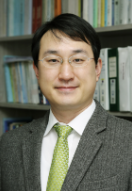
Professor Yook Se-jin | School of Mechanical Engineering - Predicting thermal transport of blood-based penta-hybrid nanofluid in Fin geometries using deep neural networks and finite difference approach
Professor Yook Sejin's paper was published in the SCI-E-indexed international journal, Engineering Applications of Artificial Intelligence (2024 IF 8.0). The research team analyzed the heat transfer characteristics of a penta-hybrid nanofluid based on blood, comparing the effect of fin thickness variation on the thermal response in rectangular, convex, and triangular fin structures. They simulated the thermal distribution using a combination of the Finite Difference Method and a Deep Learning-based prediction model, confirming a tendency for relatively higher heat transfer efficiency in the rectangular fin shape. The results provide valuable reference material for designing bio-based thermal management systems, such as cooling devices for artificial organs.
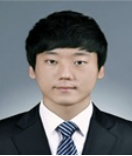
Professor Lee Yun-soo | Department of Educational Technology - Adaptive Expertise as an Engine for Thriving: How Interactions Between Job and Contextual Resources Lead to Thriving at Work
Professor Lee Yun-soo's paper was published in the SSCI-indexed international journal, Human Resource Development Quarterly (2024 IF 3.8). The research team analyzed the effect of job resources and contextual resources on thriving at work through the mediation of adaptive expertise, targeting 428 employees across 7 domestic industry sectors. The findings confirmed that the effects of job autonomy and job clarity varied depending on the learning resources and job-related diversity available.
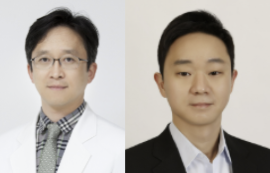
Professor Lim Young-hyo(College of Medicine, Department of Internal Medicine) and Professor Jung Yei-hwan(Major in Biomedical Engineering) - A wireless, implantable sensor for continuous monitoring of blood leakage after endovascular aneurysm repair
The paper by Professor Lim Young-hyo and Professor Jung Yei-hwan was published in the SCI-E-indexed international journal, Science Advances (2024 IF 12.5). The research team proposed an ultra-thin wireless implantable sensor that can be attached to a stent to real-time detect blood leakage(endoleak) that may occur after endovascular aneurysm repair(EVAR). The experiment confirmed that the sensor operated stably over a long period without interfering with the stent function, validating its potential for blood flow change detection and early intervention.

Professor Joung June-gak | School of Interdisciplinary Industrial Studies - FlawMatch: Conditional defect image generation via flow matching for improved surface defect classification
Professor Joung June-gak's paper was published in the SCI-E-indexed international journal, Advanced Engineering Informatics (2024 IF 9.9). In this study, the research team developed the Flow Matching-based generative model 'FlawMatch' to resolve the data imbalance problem in defect images. The model generates synthetic images that reflect the spatial and geometric information of actual defects, showing improved image distribution accuracy and classification performance compared to existing diffusion models.
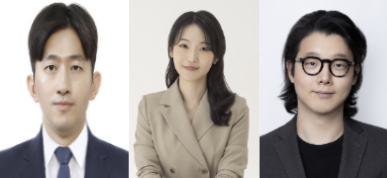
Professor Joung June-gak (School of Interdisciplinary Industrial Studies), Professor Choi Kyung-ah, and Professor Hyun Kyung-hoon (Department of Interior Architecture Design) - An explainable AI-based approach for identifying interior design style principles
The paper by Professors Joung June-gak, Choi Kyung-ah, and Hyun Kyung-hoon was published in the SCI-E-indexed international journal, Advanced Engineering Informatics (2024 IF 9.9). The research team proposed a data-driven approach that automatically recognizes furniture information within interior images to classify design styles. They collected 2,979 Korean and 2,000 American User-Generated Images(UGI), extracted furniture objects, and used Form, Color, and Material(FCM) information to train a classification model. The team then interpreted how the characteristic combinations for each style differ using Explainable AI(XAI). To achieve this, they proposed a metric called 'Style Explanation Value(SEV)' to quantify the influence of each FCM combination. The findings confirmed the existence of style differences between countries and identified specific combinations as key elements in forming the style identity.
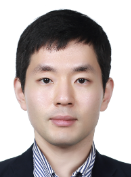
Professor Hong Je-hyeong | School of Electronic Engineering and Major in Biomedical Engineering - Long-tailed detection and classification of wafer defects from scanning electron microscope images robust to diverse image backgrounds and defect scales
Professor Hong Je-hyeong's paper was published in the SCI-E-indexed international journal, Engineering Applications of Artificial Intelligence (2024 IF 8.0). The research team proposed the 'WaferDC' framework to simultaneously handle issues of varying backgrounds, defect scales, and long-tailed data imbalance in wafer defects. They compensated for background and defect size differences using a multi-cluster memory mechanism and enhanced sparse defect data by applying the 'SegMix' defect augmentation technique. The experiment confirmed improved wafer defect detection and classification performance compared to conventional methods.

Professor Hwang Jang-yeon | Department of Energy Engineering - Novel Sodium Rare Earth Silicate Solid Electrolyte with Grain Boundary Electronic Insulation for Ultra-Durable Solid-State Sodium Metal Batteries / Chemically Anchored Lattice Oxygen Enables Stability in Layered Sodium Cathodes
Professor Hwang Jang-yeon's first paper selected in the Outstanding Papers of the Weeek was published in the SCI-E-indexed international journal, Advanced Materials (2024 IF 26.8). The research team proposed a method to mitigate grain boundary conduction resistance and lifespan degradation in solid-state sodium metal batteries by introducing an electronic insulation layer into a rare-earth silicate-based solid electrolyte. The experiment confirmed that suppressing electron transfer at the electrode interface secured high-current operation and long-term cycling stability.
His second paper was published in the SCI-E-indexed international journal, ACS Energy Letters (2024 IF 18.9). To improve the oxygen instability of layered oxide cathodes, the team applied 'La³⁺ dual-doping' and confirmed that the lattice oxygen acts to suppress electronic and structural collapse. This cathode maintained its capacity retention after 600 cycles, suggesting the possibility of designing highly stable sodium-ion batteries.


 '한양위키' 키워드 보기
'한양위키' 키워드 보기